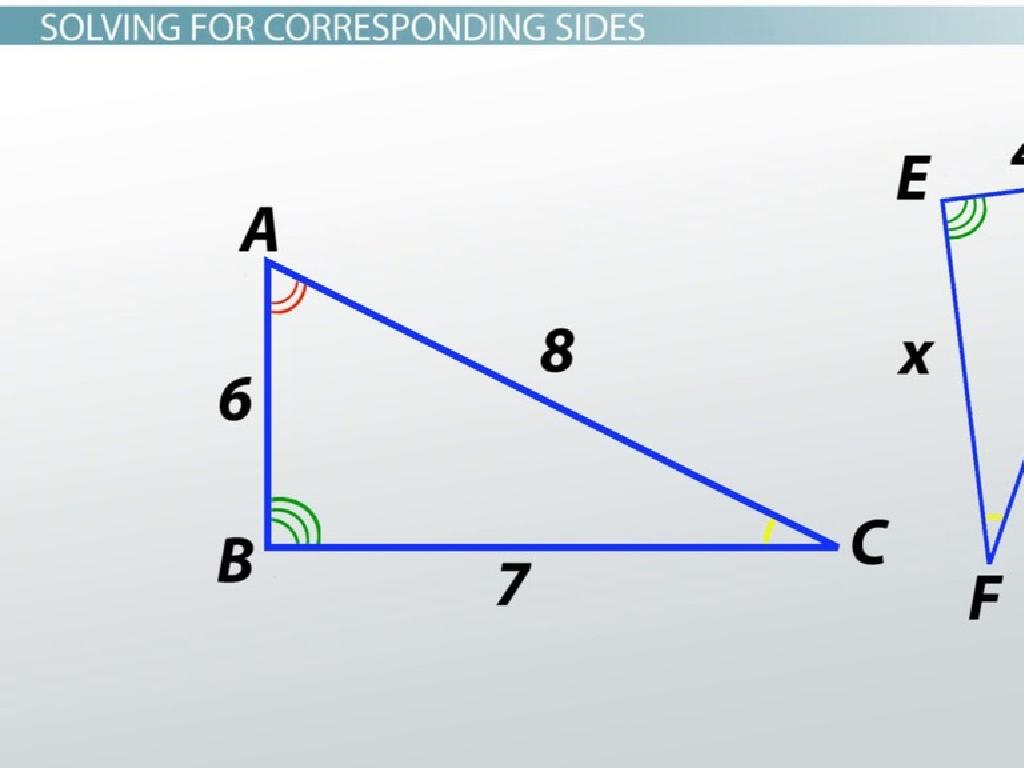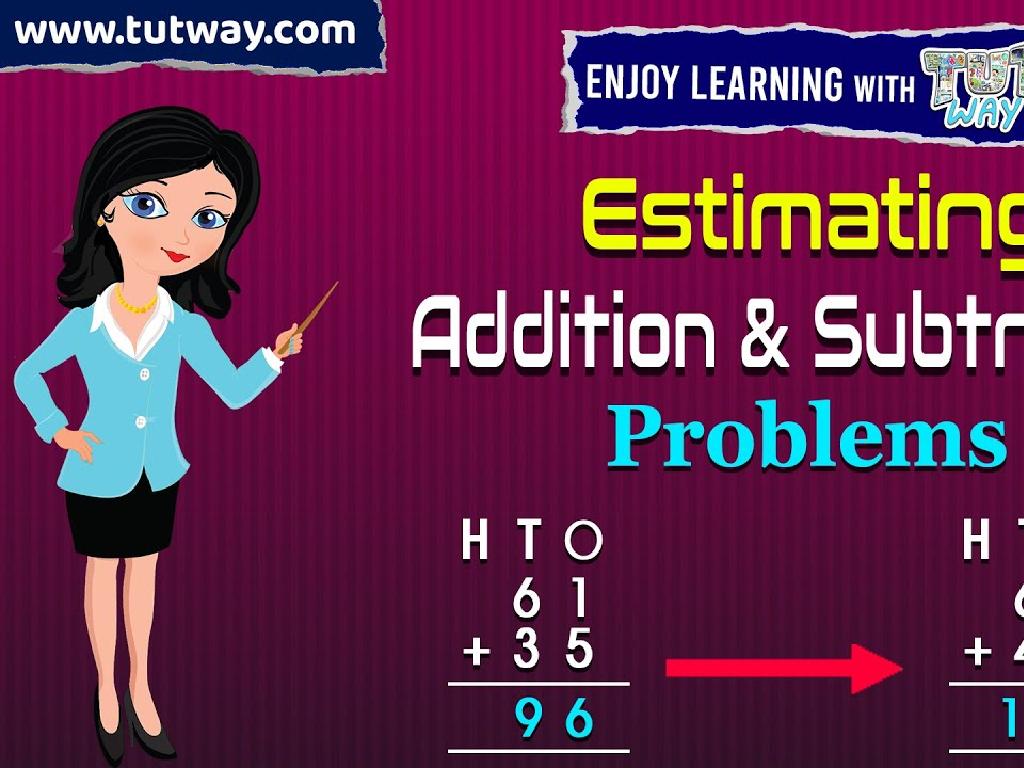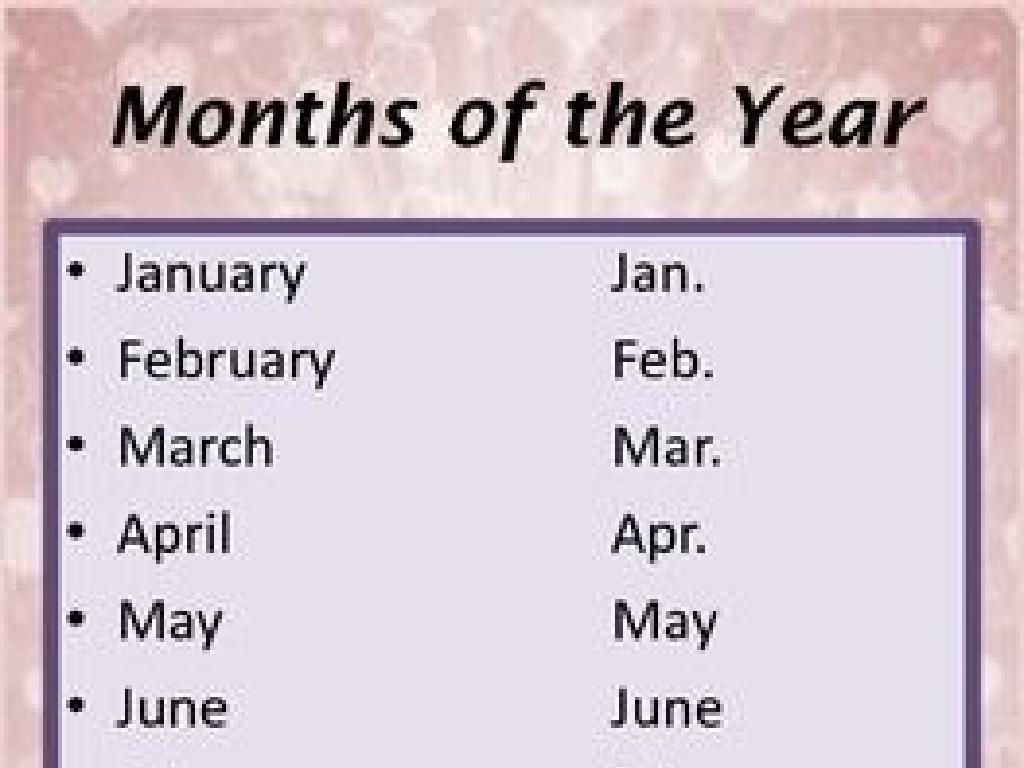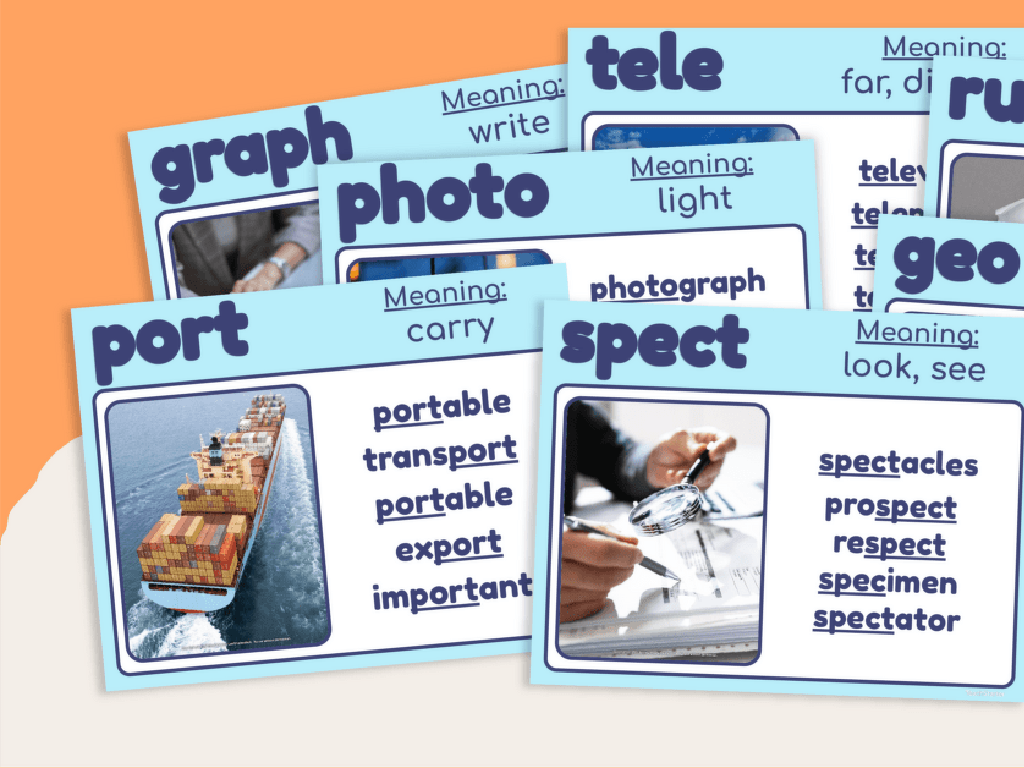Area Of Compound Figures With Triangles, Semicircles, And Quarter Circles
Subject: Math
Grade: Seventh grade
Topic: Perimeter And Area
Please LOG IN to download the presentation. Access is available to registered users only.
View More Content
Exploring Compound Figures
– Perimeter vs. Area
– Perimeter is the distance around a shape, area is the space inside.
– Defining Compound Figures
– Shapes made by combining triangles, semicircles, quarter circles, etc.
– Real-life Compound Examples
– Basketball courts, decorative tiles, and park layouts.
– Calculating Compound Areas
|
This slide introduces students to the concept of compound figures, which are shapes that consist of two or more simple geometric figures, such as triangles, semicircles, and quarter circles. Begin by clarifying the difference between perimeter and area, ensuring students understand that perimeter is the total distance around the outside of a shape, while area is the measure of the space inside the shape. Provide real-life examples where compound figures are used, such as in the design of sports courts or decorative tiling, to help students visualize the concept. Conclude by explaining how to approach calculating the area of compound figures by breaking them down into simpler shapes whose areas can be calculated and then combined. Encourage students to think of other examples of compound figures they may encounter in their daily lives.
Breaking Down Compound Figures
– Identify shapes in a figure
– Look for triangles, semicircles, and quarter circles within the figure.
– Break down complex shapes
– Divide the figure into familiar shapes to simplify area calculation.
– Practice with a compound figure
– We’ll work through an example as a class to identify shapes.
– Discuss our findings
– Share how we each broke down the figure and why.
|
This slide is aimed at teaching students how to approach compound figures by identifying and breaking them down into simpler shapes, such as triangles, semicircles, and quarter circles. Start by explaining how to recognize these shapes within a complex figure. Then, demonstrate how to decompose a compound figure into these basic shapes, making it easier to calculate the total area. Engage the class with a practice example, guiding them through the process of identifying the shapes. Finally, encourage a discussion where students share their methods for breaking down the figure, fostering a collaborative learning environment.
Calculating Area of Triangles in Compound Figures
– Recap triangle area formula
– Area = 1/2 * base * height
– Finding base and height
– Identify perpendicular sides as base & height
– Example: Triangle in a compound shape
– Calculate area within figures like rectangles
– Practice with different triangles
|
Begin with a quick review of the formula for the area of a triangle, emphasizing the importance of identifying the base and the height, which must be perpendicular to each other. Use a visual example to show how to find a triangle’s base and height within a compound figure, such as a triangle inside a rectangle or alongside a semicircle. Work through the example step by step, calculating the area of the triangle. Encourage students to practice with various triangles in different orientations within compound figures to solidify their understanding.
Area of Semicircles and Quarter Circles
– Understanding Pi (À)
– Pi (À) is a constant approximately equal to 3.14, crucial in circular area calculations
– Importance of Radius (r)
– Radius is the distance from the center to the edge of a circle, key to finding area
– Area formulas for semicircles and quarter circles
– Semicircle area: (Àr^2)/2, Quarter circle area: (Àr^2)/4
– Example: Calculating areas
– If r=4, semicircle area: (À*4^2)/2, quarter circle area: (À*4^2)/4
|
This slide introduces students to the concepts of Pi (À) and radius (r), which are fundamental in calculating the area of circular shapes. Emphasize that Pi is a special number used in all circular calculations. The radius is half the diameter and is used in the formulas to find the area of semicircles and quarter circles. Provide the formulas for both shapes and walk through an example calculation for each, ensuring to square the radius and then apply the appropriate fraction of Pi. Encourage students to practice with different radii and to visualize the shapes as parts of a whole circle.
Calculating Area of Compound Figures
– Add & subtract areas of shapes
– Sum the areas of simple shapes within the figure, or subtract the area of the space not occupied.
– Strategies for complex figures
– Break down figures into familiar shapes, calculate each area, then combine.
– Group activity: find compound area
– Work together to solve the area of an assigned figure using learned strategies.
– Utilize formulas for each shape
– Apply correct formulas for triangles, semicircles, and quarter circles.
|
This slide introduces the concept of calculating the area of compound figures by adding and subtracting the areas of simple shapes. Start by reviewing the formulas for the area of triangles, semicircles, and quarter circles. Discuss strategies for dissecting complex figures into simpler components. For the group activity, provide each group with a different compound figure to calculate the area. Ensure that each group understands the process of breaking down the figure and applying the formulas. Possible activities could include creating their own compound figures, solving provided examples, or finding the area of objects in the classroom.
Practice Problems: Area of Compound Figures
– Solve problems individually
– Share solutions with the class
– Explain how you found the area of each figure
– Discuss methods used
– Did you use area formulas for triangles, semicircles, or quarter circles?
– Address challenges faced
– Share difficulties in calculation or understanding
|
This slide is dedicated to practice problems on calculating the area of compound figures. Students are expected to work through the problems individually, which encourages independent problem-solving skills. Afterward, they will share their solutions and the methods they used with the class, fostering a collaborative learning environment. Discussing the challenges they faced will help them learn from each other and clarify any misconceptions. As a teacher, be prepared to guide the discussion, provide alternative methods, and reinforce the area formulas for triangles, semicircles, and quarter circles. Offer at least 4-5 different types of problems to cater to varying levels of difficulty and ensure that every student is challenged.
Class Activity: Crafting Compound Figures
– Draw a unique compound figure
– Calculate the total area
– Use area formulas for triangles and circles
– Present your figure and area
– Explain your calculation steps
– Reflect on the activity
– Share what you learned or found challenging
|
This class activity is designed to reinforce students’ understanding of calculating the area of compound figures. Students will apply their knowledge of area formulas for triangles, semicircles, and quarter circles to create a unique figure. They should use the appropriate formulas to calculate the total area of their figure. Encourage creativity in their designs and accuracy in their calculations. Afterward, students will present their figures and explain their solutions to the class, fostering peer learning. Conclude with a reflection session where students can discuss what they learned and any difficulties they encountered. Possible activities include creating figures that represent real-world objects or collaborating in groups to compare different approaches to the same figure.
Review and Q&A: Area of Compound Figures
– Recap key concepts of area calculation
– Area formulas for triangles, semicircles, and quarter circles
– Q&A session for any clarifications
– Ask about today’s lesson or previous related topics
– Provide extra practice resources
– Worksheets and online exercises for additional practice
– Encourage exploration beyond the lesson
|
This slide aims to consolidate the students’ knowledge on calculating the area of compound figures, which include triangles, semicircles, and quarter circles. Begin with a brief review of the formulas and methods used in today’s lesson. Open the floor for a Q&A session, encouraging students to ask questions to clear up any confusion. Share links to worksheets and online resources where students can find more problems to solve, ensuring they get enough practice to master the concept. Lastly, motivate students to apply these concepts in real-world scenarios or to explore related mathematical topics for a deeper understanding.




/historical_maps_global_age.jpg)

